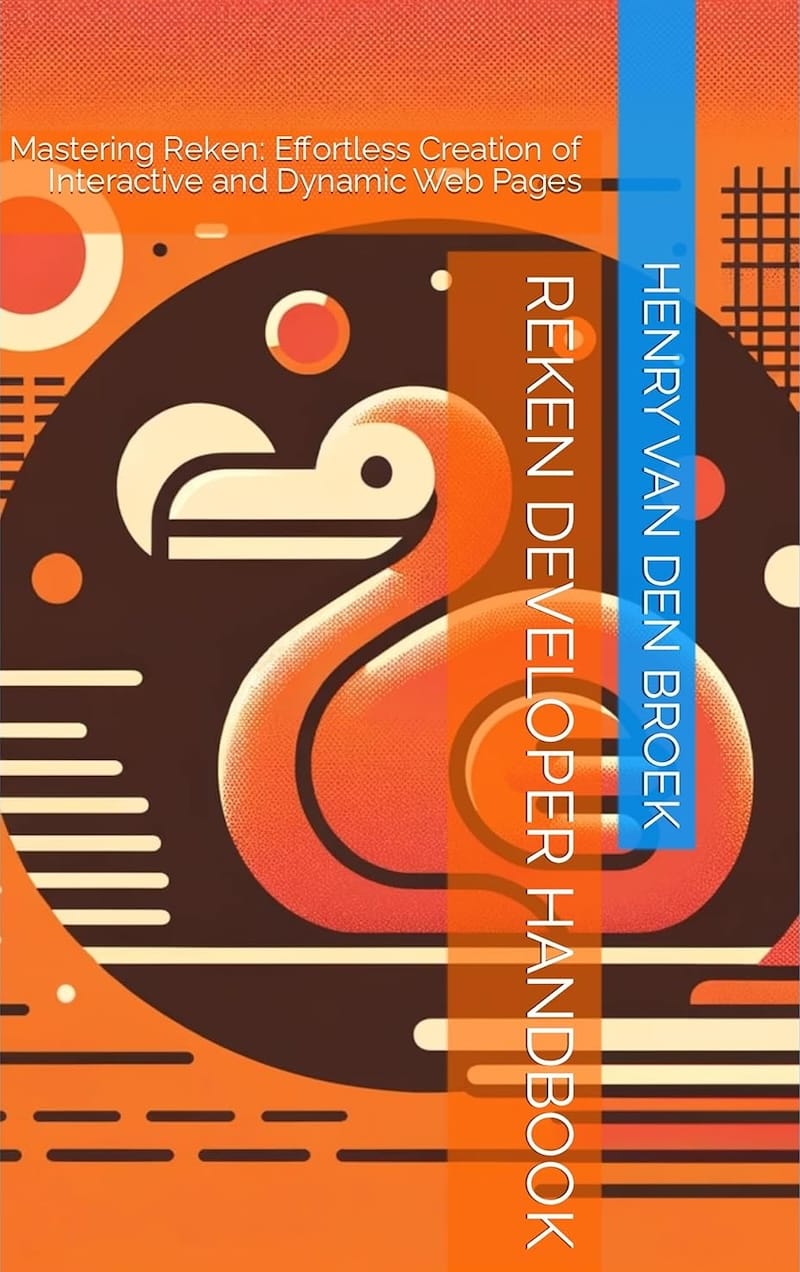After two months of writing, I have just finished publishing my first book titled "The Reken Developer Handbook." Initially, I had no intention of writing the book. It all began when I aimed to improve the documentation for Reken, the Web Development framework I've been working on. I filed an issue on the project's GitHub, hoping someone would be interested in helping with the Reken project.

Since there were no volunteers, this fall, I decided to take on the task myself and started working on a Developer Guide. As writing is not my forte, I sought assistance from ChatGPT. I used it to generate a chapter layout and then a layout for each chapter. This process resulted in 18 chapters, which I later reduced to 14.
1. Introduction
2. Installation and Setup
3. Basics
4. Reken Attribute Reference
5. Advanced Features
6. JavaScript API
7. Examples and Use Cases
8. Best Practices
9. FAQs
10. Resources
11. License
12. Acknowledgments
13. Contact
14. AppendixI then began writing content for each chapter. Being a guide, it included numerous code samples, with complexity increasing in subsequent chapters. Halfway through, I realized the guide had the potential to become a book, which was a significant motivation.
The first few chapters contain easy examples, but in Chapter 7, the book progresses to a complete interactive application representing an employee directory with profile photos, which I had generated by DALL-E.

Upon completing the content, it totaled over 15,000 words (184 pages) and featured more than 70 code samples, ranging from simple snippets to entire applications. I also made these code samples available as standalone webpages on the reken.dev website and as a downloadable zip file.
A great way to publish a book is via Amazon's Kindle Direct Publishing program. They offer a desktop application, Amazon Kindle Create, to design the book around your content.
Since my content was written in markdown (converted to HTML for the website), and Kindle Create requires a Microsoft Word document (doc or docx), I needed a tool to convert from markdown to docx. I found a tool called Pandoc, a universal document converter. It processed the markdown file, which I had created by merging all the individual markdown chapters into one file, and generated a Word document.
In Kindle Create, you can also include book-specific details such as cover design, foreword, index, and author information. It also allows you to preview the book as it would appear on a Kindle, iPad, and iPhone.

To publish the book, I visited Kindle Publishing online, provided details about the book, and uploaded the exported .kpf file. I also needed a book cover. Here, I again turned to ChatGPT and asked for various book cover designs. After some deliberation, I chose a mostly orange design featuring a symbolic Dodo (an extinct Australian turkey) with abstract ornaments. Since I saw a documentary about this now extinct bird, alway had an interest in Dodos.
Once I pressed the publish button, there was a two-day review period before the book appeared in the Amazon Kindle store, where it is now available for purchase.


